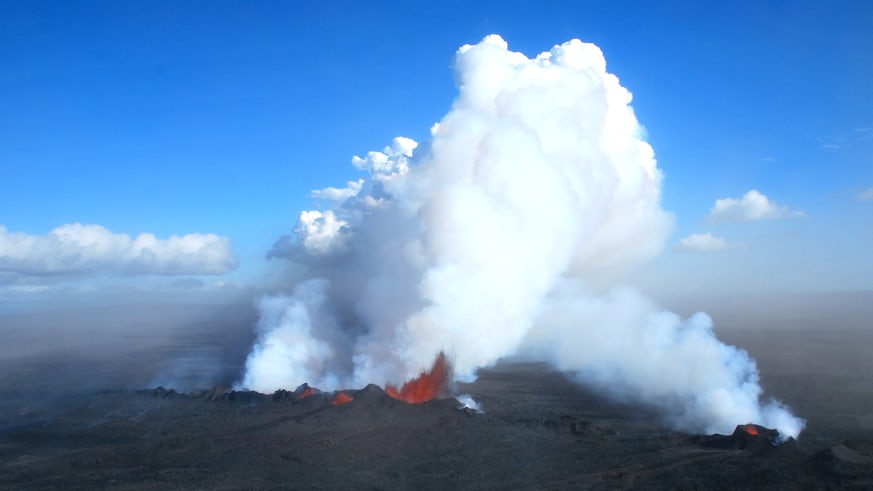Volcanic carbon dioxide drove ancient global warming event
1 Medi 2017

New research involving a team of international scientists co-authored by Professor Paul Pearson, suggests that an extreme global warming event 56 million years ago was driven by massive CO2 emissions from volcanoes, during the formation of the North Atlantic Ocean.
The study, published in Nature, used a combination of new geochemical measurements and novel global climate modelling to show that atmospheric CO2 more than doubled in less than 25 thousand years during the Palaeocene-Eocene Thermal Maximum (PETM) – with volcanoes squarely to blame.
The PETM is the most rapid and extreme natural global warming event of the last 66 million years. It lasted for around 150 thousand years and global temperatures increased by at least 50C – a temperature increase comparable with projections of modern climate beyond the end of this century. While it has long been suggested that the PETM event was caused by the injection of carbon into the ocean and atmosphere; the ultimate trigger, the source of this carbon, and the total amount released, have up to now all remained elusive.
It had been known that the PETM roughly coincided with the formation of massive ‘flood basalts’ – large stretches of ocean floor and the continents coated in lava, resulting from of a series of huge eruptions. These occurred as Greenland and North America first started separating from north-western Europe, thereby creating the North Atlantic Ocean, the vestiges of which are still continuing in miniature in Iceland today. What has been missing is evidence linking these huge volcanic outpourings to the carbon release and warming that marks the PETM.
The team found that the PETM was associated with a total input of more than 12,000 petagrams of carbon from a predominantly volcanic source. This is a vast amount of carbon – some 30 times larger than all the fossil fuels burned to date and equivalent to all current conventional and unconventional fossil fuel reserves. In their computer model simulations, it resulted in the concentration of atmospheric CO2 increasing from around 850 parts per million to above 2000 ppm. The Earth’s mantle contains more than enough carbon to explain this dramatic rise and it would have been released as magma poured from volcanic rifts at the Earth’s surface.
Professor Gavin Foster from the University of Southampton said: “How the ancient Earth system responded to this carbon injection at the PETM can tell us a great deal about how it might respond in the future to man-made climate change. For instance, we found that Earth’s warming at the PETM was about what we would expect given the CO2 emitted and what we know about the sensitivity of the climate system based on Intergovernmental Panel on Climate Change (IPCC) reports. However, compared with today’s human-made carbon emissions, the rate of carbon addition during the PETM was much slower, by about a factor of 20.”
Dr Philip Sexton from the Open University in Milton Keynes continues: “One unexpected result of our study was that enhanced organic matter burial was important in ultimately drawing down the released carbon out of the atmosphere and ocean and thereby accelerating the recovery of the Earth system. This shows the real value of studying these ancient warming events as they provide really valuable insights into how Earth behaves when its climate system and carbon cycle are dramatically perturbed.”
Professor Paul Pearson is the principal investigator on the overall project ‘Abrupt Ocean Acidification Events’ jointly funded by the Natural Environment Research Council (NERC), Department for Environment Food and Rural Affairs (DEFRA), and Department of Energy and Climate Change (DECC) as part of the UK ocean acidification research programme.